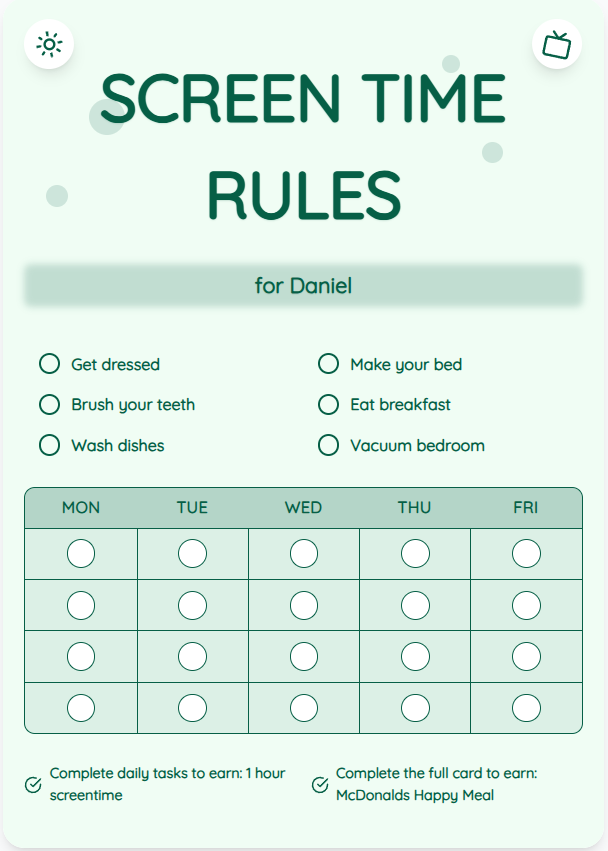Screen Time Yesterday: A Parent's Guide to Balancing Tech Use for Kids
As a parent, navigating your child's screen time from yesterday can be challenging. Finding the right balance is crucial for their development and well-being. In this guide, we provide actionable advice to help you manage screen time effectively for children aged 2-12.
See What Your Screen Time Chart Will Look Like
Here's an example of a beautiful, customizable screen time rules chart you can create for your family

Understanding the Impact of Screen Time on Child Development
Screen time can affect various aspects of child development, including cognitive skills, social interactions, and physical health. Excessive screen time may lead to issues like decreased attention span and disrupted sleep patterns. By being mindful of the impact, parents can make informed decisions about their child's tech use.
Setting Screen Time Limits and Boundaries
Establishing clear screen time limits and boundaries is essential. Create a screen time schedule that balances educational content, physical activity, and family time. Consider using a screen time chart generator like ScreenTimeRules.com to visualize and implement these limits effectively.
Put These Tips Into Action
Create a custom chart to implement these strategies with your child
Encouraging Alternative Activities
Encourage your child to engage in non-screen activities such as reading, outdoor play, creative arts, and family games. Providing alternative options can help reduce dependency on screens and foster a well-rounded lifestyle.
Practical Tips for Success
- Create a consistent screen time routine for your child.
- Use positive reinforcement to encourage healthy tech habits.
- Engage in screen time activities together to monitor content.
- Set a good example by limiting your own screen time.
Frequently Asked Questions
How much screen time is appropriate for children aged 2-12?
The American Academy of Pediatrics recommends no more than 1 hour of high-quality screen time per day for children aged 2 to 5, and consistent limits for older children, balancing screen time with other activities.
What are the signs of excessive screen time in children?
Signs include irritability when not using screens, difficulty focusing on non-screen activities, disrupted sleep patterns, and withdrawal from social interactions.
How can I encourage my child to reduce screen time without conflicts?
Involve your child in setting screen time rules, offer alternative activities, and provide positive reinforcement for following the limits. Consistent communication and modeling healthy tech habits are key.
Managing your child's screen time from yesterday requires a thoughtful approach that considers their development and well-being. By implementing the tips and strategies outlined in this guide, you can create a healthy tech balance in your family. Explore the benefits of using screen time charts to streamline this process and promote harmonious screen time management.
Ready to Transform Your Family's Screen Time?
Join thousands of parents who have successfully managed screen time with our customizable charts.
